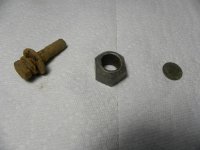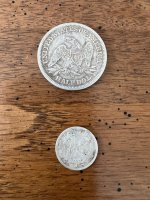- Jun 1, 2012
- 5,036
- 7,168
- Detector(s) used
- Garrett ADS-7X, Fisher Two Box M-Scope, Mother Lode Locator, Dowsing Model 20 Electroscope, White's TM808, White's TM900, Inground Scanners
- Primary Interest:
- All Treasure Hunting
Franklin, what was the 1819-1821 individual value of each of the two alleged deposits? Roughly 1 million each, or there abouts?
No the Job Print Pamphlet mentions it would be worth $750,000 and that in 1885. Would have to find the cost of living back in 1819-1822 or at least the value of a dollar. If it was divided 30 individual shares they would have only gotten $25,000 each. Back in 1819-1822 would be considerably less probably only $16,875 each. If you add RM's share then it would be $16,330 for each individual's share.
In 2010 our dollar was worth 0.153 cents. In 1822 it was worth $2,500. and in 1885 it was worth $3,704.
If you had $16,875 in 1822 you would have $42,187,000 of buying power compared to today. So back in 1822 that treasure would have been worth over one and one quarter $Billion Dollars.
Amazon Forum Fav 👍
Last edited:






